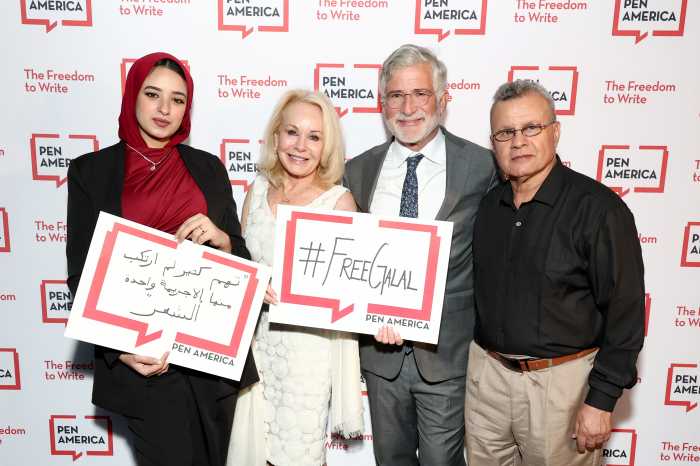By Dan Fiedler
Volume 73, Number 32 | December 10 – 16, 2003
Affordable housing group can no longer afford rent
At first sight, the red and white “Space For Rent” sign at 525 E. Sixth St. seems innocuous. For the current tenants of the building, however, its significance is mired in the harsh reality of a market-driven economy that has pushed local real estate prices to unheard-of rates. Since 1987, the building has been home to Good Old Lower East Side, a neighborhood housing and preservation organization dedicated to homelessness prevention and community revitalization. For GOLES, whose landlord is currently intent on doubling the space’s rent, the sign is something of a canary in a coal mine, signaling the death of affordable housing on the Lower East Side.
In some ways, E. Sixth St. between Avenues A and B looks much the same as it did even 10 years ago. Local businesses like Wonder Bar, Sidewalk Cafe and the quirky Gladiator’s Gym still operate. But more fundamental changes are happening beneath the veneer of these familiar businesses. “Four years ago, beer bottles lined this street,” said Joey Torres, a porter at 523 E. Sixth St. “Now, the streets are clean: no drug dealers, no panhandlers, no crime.”
And soon, perhaps, no low-income residents.
Since the 1900s, immigrants have flocked to this corner of Manhattan. Now, those immigrants come carrying cell phones and checkbooks, able to rent studios for $1,200 to $1,400, and buy one-bedroom condos on Avenue D priced close to $500,000. With them follow the fashion boutiques and gourmet coffee shops, also able to pay the higher commercial rents.
At the nearby Lower East Side People’s Mutual Housing Association, which owns 26 buildings in the area, the waiting list for affordable housing is closed, maxed out at 4,000 people. As Mary Spink, executive director of P.M.H.A., explained, there simply is no affordable real estate: “For every building lost to high rent, there isn’t another low-cost alternative going up.”
Where does that leave GOLES and the rest of the tenants at 525 E. Sixth St? For an organization that has worked since 1977 to secure affordable housing on the Lower East Side, the ultimate irony is that it could wind up homeless itself. On the other hand, if GOLES is able to renew its lease, the other tenants might wind up in an even worse situation.
“It is stipulated in the new lease,” said Margaret Hughes, the executive director of GOLES, “that we cannot work with residents of the building.” Therefore GOLES, which originally helped organize the building into a low-income co-op, might be strong-armed into silence. And some of the eight tenants in the building are facing eviction over nonpayment of rent.
GOLES’ lease expires Dec. 31, 2003. According to Hughes, at first the landlord sought to triple their rent, but they were able to negotiate it down to double. A call to the phone number listed on the for rent sign outside GOLES revealed that the asking rent for the space is currently $4,500.
Whether the organization is able to negotiate a new lease or not, there is no denying the Lower East Side’s general shift towards gentrification and higher rents. And if GOLES is forced out, what happens to the remaining low-income tenants who similarly feel the squeeze and on whose behalf the organization advocates? Who will help them?
This past November, nearly 39,000 people a day slept in shelters, the highest number in New York City’s history. Others make do by staying with family and friends, not to mention those who sleep outdoors and on subway trains. What happens to the tenants of 525 E. Sixth St. this winter is yet to be determined. As the mural that pays tribute to Joe Strummer nearby at the corner of Seventh St. and Avenue A states, “The future is unwritten.”
Villager photo by Dan Fiedler








































